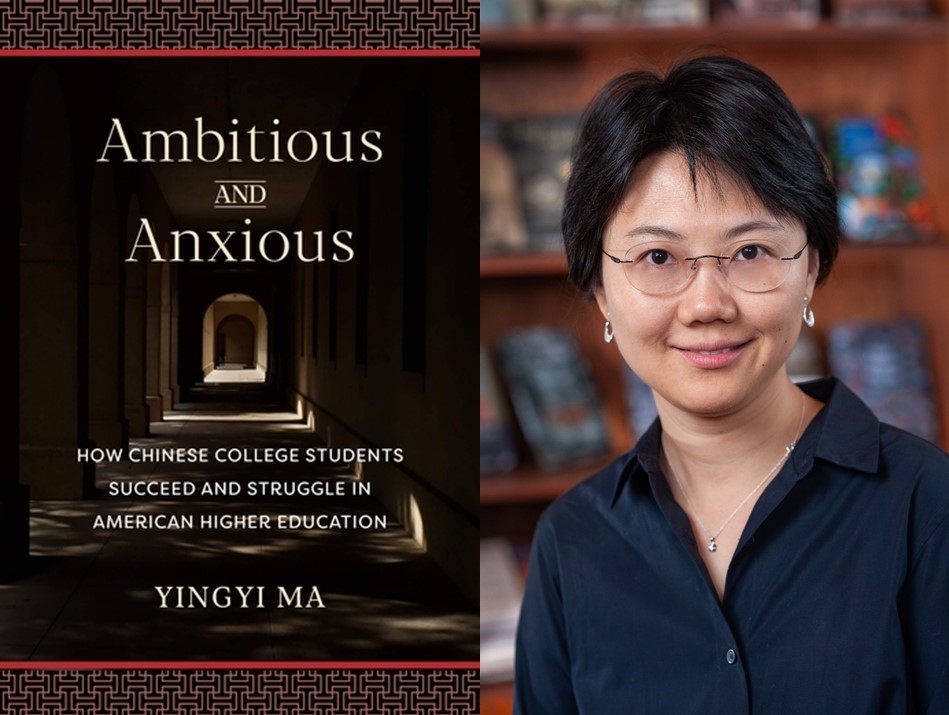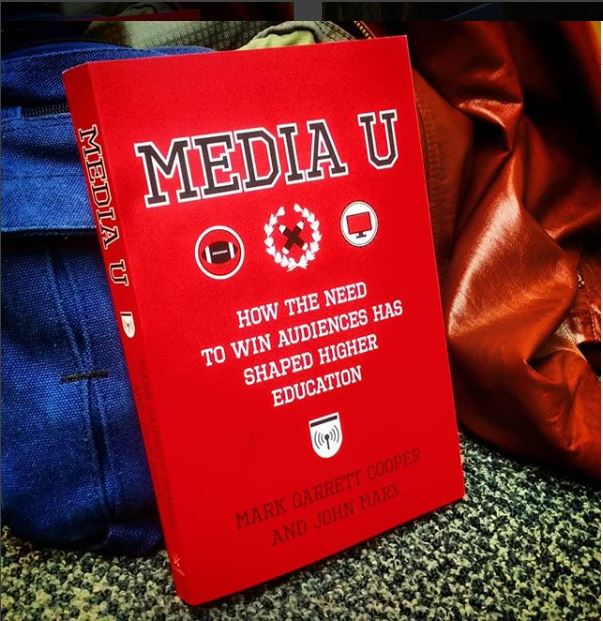Q&A: Yingyi Ma on Ambitious and Anxious: How Chinese College Students Struggle and Succeed in American Higher Education

“From the first word to the last, Ambitious and Anxious is eye-opening, provocative, and replete with original details. Yingyi Ma has produced a trove of valuable interviews and survey results that challenge unexamined narratives about Chinese students in America and illustrate their daily lived experience in ways that will shape our understanding for years to come.”
~Evan Osnos, author of Age of Ambition: Chasing Fortune, Truth, and Faith in the New China
Amid tensions between China and the United States, international students are caught in the middle, both courted and held at arm’s length by many American universities. In the spirit of International Education Week (November 18–22), which seeks to foster and celebrate a global flow of ideas and experiences, Syd Low spoke with Yingyi Ma about her forthcoming book, Ambitious and Anxious: How Chinese College Students Struggle and Succeed in American Higher Education.
• • • • • •
Syd Low: There is a long history of Chinese students studying in the United States—I’m thinking particularly of figures like Hu Shi and Chao Yuen Ren, who came via the Boxer Indemnity Scholarship—do you see the students you engage with as a continuation of this history? In what ways are they different or similar?
Yingyi Ma: Thank you for providing the historical context for this. I do see that there is a continuity in terms of students throughout Chinese history yearning to broaden their horizons and see a larger world through study abroad. But distinctive to this generation is how pervasive the phenomenon is and how natural the students feel about studying abroad. Studying in the United States is no longer reserved for academic or economic elites, largely because of the rising middle class in China and their hunger for high quality educational opportunities. Chapter 2 of my book shows that students from urban China increasingly consider studying abroad as a viable option, in addition to or, in some cases, instead of Gaokao, the Chinese college-entrance exam. A minority of these students even came from working-class families, and their parents sell their apartments to afford overseas education.
SL: In some ways your book is also an examination of the changing global economy and the need for international understanding. You write about needing a “paradigm shift” to recognize the agency of international students rather than focusing on their assimilation. What made you decide to use international students as a point of focus?
YM: That is exactly how I want readers to view this book! Chinese international students embody the changes happening in both China and American higher education. All the stakeholders in this story need a paradigm shift in their understanding of the study-abroad narrative, from expecting the students to assimilate and adapt to encouraging learning that flows both ways: Americans and Chinese learn about and from each other through college education and beyond, which is the real value of international education. International students are potential change agents across different cultures and societies but remain surprisingly obscure and invisible in the broad research literature of social science. Chapter 8 specifically shows how Chinese students reflect their own growth and change after studying in the United States.
SL: Let’s discuss how Chinese exchange students self-identify when they come to the United States. In the book, you mention that the media has historically focused on the initial wave of wealthier Chinese students and that they’re now even more visible—I’ve seen quite a few videos of brand-name-clad individuals tearing down pro-HK statements on campuses. What, if anything, did your research uncover about ideological stances that followed from students’ other identities, such as class? Does having an “outsider status” in U.S. schools play a role?
YM: What I find from this research is a diverse set of Chinese students in terms of both family backgrounds and education trajectories. As most of them are full-pay students in American higher education, they are preselected economically. Some of them are indeed from wealthy families, but many others are from middle-class families with parents who are salaried professionals such as teachers and engineers and who pull together their family or extended-family resources to send their child—often their only child—abroad. As far as their national identities, I do find that they renewed their interest in Chinese culture and society when they are away from China. Their Chineseness is strengthened while abroad. This dynamic is not unique to them but is broadly common among sojourners. Distance makes the heart grow fonder. I finished the book before the protests in Hong Kong, but I need to point out that the media portrayals often capture the more extreme and dramatic cases of confrontation. A lot more diversity and nuance exist among Chinese students in terms of their views and thoughts. Just as they are not uniformly wealthy, they are also different in terms of their social and political views. Throughout the book I aim to uncover the diversity among Chinese students that is often obscured in the media.
SL: Part of the drive for students to study in the United States is the simple lack of top ranked universities in China. The book mentions that out of the top 100 universities in the world, only two are in China, and almost half are in the Untied States. Do you see the landscape of Chinese education changing to meet a demand for quality institutions? If so, what are some of the hurdles standing in the way?
YM: I do see Chinese higher-education landscape changing as a consequence of the government efforts to create world-class universities. There has been impressive progress in terms of research funding and peer-reviewed research-paper publications, as a result of the government’s enormous investment and incentives. Quality education in terms of instruction and especially undergraduate instruction has not been prioritized until very recently. I saw news that the Chinese ministry of education issued directives and guidelines about specific ways to improve undergraduate education. But to implement those changes and truly create more quality higher-education opportunities to meet the demands of the rising middle-class population—we are talking about a group approximately the size of the population of the United States—will take many years, perhaps decades.
SL: This research seems like a very ambitious undertaking! As you say, there are no national data on Chinese students in America so you had to collect much of it yourself in addition to conducting fieldwork in two countries. The book covers a lot of ground—and very fluidly—but is there more you’re hoping to address in future work? What are you working on next?
YM: I do want to follow up with these students after their graduation. Where do they work? How are they fulfilled or unfulfilled? What effect does studying in the United States have on their work and life broadly? How will the international education they received affect their life trajectories and potentially shape U.S.-China relations?
Syd Low is an MA candidate in the department of East Asian Languages & Cultures at Columbia University.







